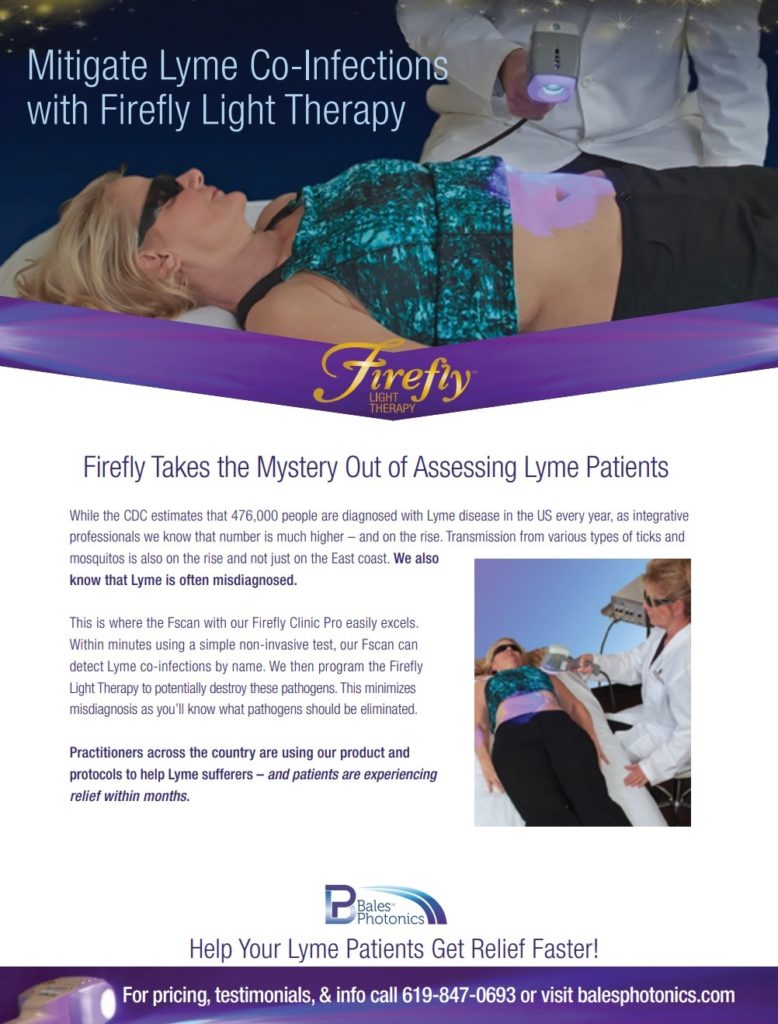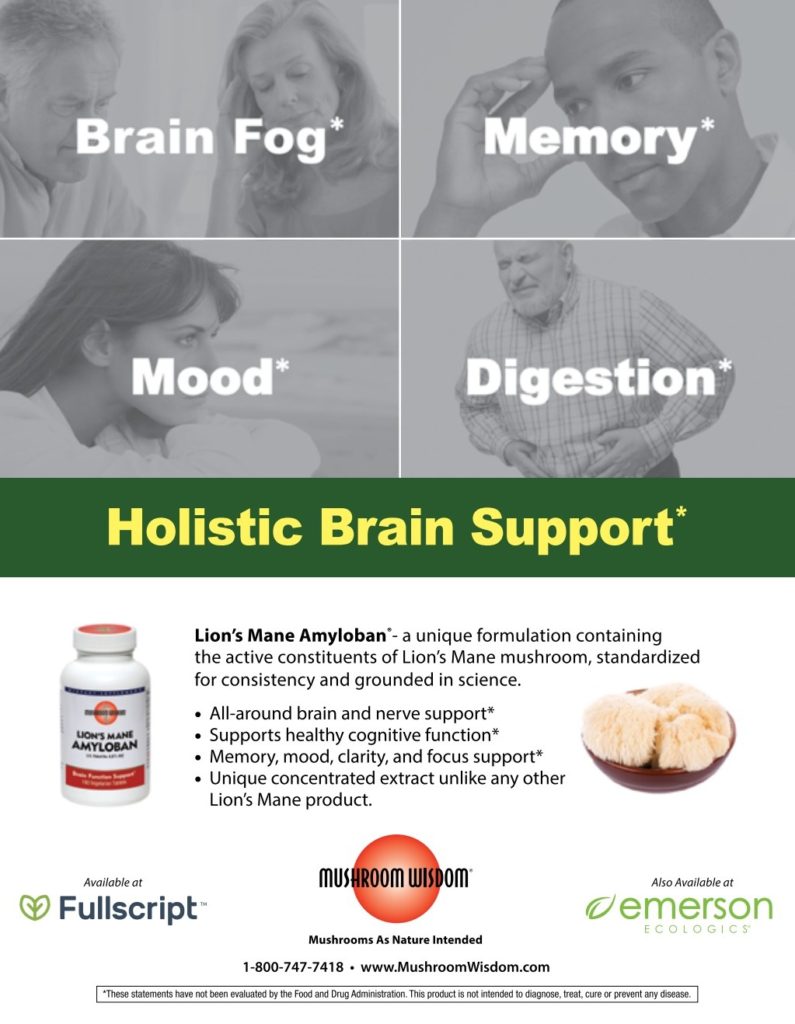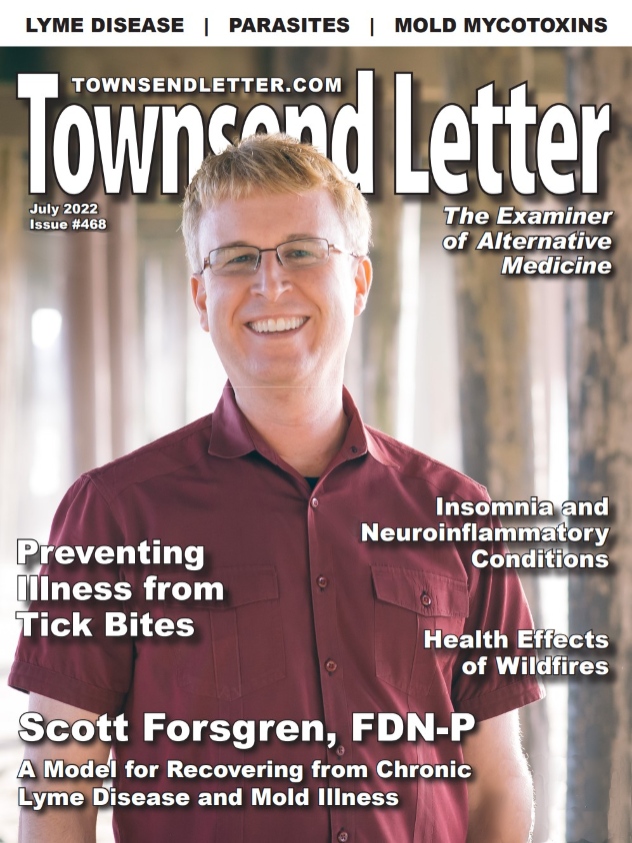By Dan Sullivan (ND student)
and Baljit Khamba, ND, MPH
Introduction
Hashimoto’s thyroiditis (HT) is a chronic autoimmune disease that occurs in all age groups and presents in women to men 7:1.1 It is characterized by lymphocytic infiltration of the thyroid gland, which usually results in impaired thyroid function and a painless goiter. The exact cause is unknown; however, certain factors can predispose individuals to the development of HT. These factors include genetic susceptibility, such as family history of autoimmune diseases, gene polymorphisms associated with autoimmune diseases (HLA-DR3, HLA-DR4, HLA-DR5, VDR etc.), and chromosomal abnormalities; environmental risk factors, such as selenium deficiency, pollutants, bacterial or viral infections (like EBV), pregnancy, stress; and various immunological factors are thought to play an important role. Thyroid function can be measured using several laboratory markers such as TSH, free T4, or free T3, while HT typically presents with elevated levels of TPOAb (90-95% of patients), TGAb (60-80% of patients), or TSH receptor blocking antibodies (10% of patients).1
The Moderna mRNA vaccine enters the cell cytoplasm and is translated by the ribosomes to form perfusion-stabilized SARS-CoV-2 spike proteins. The spike proteins are transported to the cell surface and presented to the immune system. Some of the spike proteins are also processed into smaller peptides that are presented to the immune system. The spike protein peptides are presented to T cells via MHCII, while the spike proteins are presented to B cells via BCR.2
The severity of HT independently involves CD8+ activated T lymphocytes and thyroid auto-antibodies. IFN gamma, an inflammatory cytokine produced by Th1 cells, activates cytotoxic T lymphocytes and increases cell-mediated cytotoxicity. IFN gamma may therefore be one influencing factor in the severity of HT. Part of the mechanism of action of mRNA vaccines such as the Moderna COVID-19 vaccine is triggering of the IFN pathway. Theoretically, upregulation of the IFN pathway via mRNA vaccination in an already upregulated state could increase the severity of HT.3, 4
Patient Information
Patient X is a 53-year-old Caucasian female with a history of Hashimoto’s thyroiditis, facial paralysis, flank pain, chronic fatigue, leg pain, chronic UTI’s, chronic constipation, and obesity who presented to BUC clinic for naturopathic evaluation and management of symptoms as well as improved quality of life.
Context: Symptoms of hypothyroidism appeared about 6 years ago, including fatigue and cold intolerance. Patient was first seen at BUC in 2019 to improve thyroid function and improve overall health. Over the next several months, lifestyle, dietary intervention, and supplementation yielded an improvement in her hypothyroid symptoms; however, her physical and mental health began to decline during the COVID-19 pandemic. She received the Moderna COVID-19 mRNA vaccine in hopes of improving her immunity to COVID-19; however, facial paralysis and a worsening of symptoms began shortly thereafter.
Clinical Findings
| Vitals: | Height 5’5”; Weight 282 lbs; BMI 45.9; BP 128/82; SpO2 96% |
| Past medical history | Eczema, heart ablation therapy, long standing constipation (typically 3-4 days without a bowel movement), tarsal tunnel syndrome, plantar fasciitis, cysts, and adenomyosis |
| Allergies | MRI dyes and hydrocodone |
| Medications and supplements | Armor thyroid 15 mg QD; Vitamin D3 10,000 iu QD; NAC 600 mg QD; Fish Oil 2 g QD; Ashwagandha 450 mg QD; Multivitamin QD; B12, B6, Zinc QD |
| Social history | Previous veteran, was in the Navy for 20 years and is currently unemployed |
| Diet | Recent elimination of gluten, vegetables, fruits, string cheese, keto bars, meats, eggs, fish, and gluten-free bread. Hydration typically five glasses of water and five glasses of unsweetened decaffeinated tea per day |
| Physical Exam | Thyroid tender to palpation (TTP), head and neck lymph nodes TTP, abnormal eye tracking, reduced facial expression on left side of the face, reduced discriminatory touch of left side of face, onset of headache during neurological exam |
Timeline
| Date: | Main Concerns: | Other Information: |
| 2013 | First noticed hypothyroid symptoms | |
| 11/19/19 1st visit at BUC | Thyroid problem, insomnia, chronic UTIs, leg pain, and abdominal pain | Had just completed her 5th round of antibiotics for chronic UTIs. We recommended running thyroid labs at this visit. |
| 12/3/19 | Thyroid problem, lower abdominal pain, and chronic bilateral low back pain with bilateral sciatica | Improvement from D-mannose supplementation i.e. no urinary difficulties or dysuria. Improvement in digestion from apple cider vinegar. Recommended Mediterranean diet |
| 1/15/20 | Hashimoto’s thyroiditis, urinary incontinence, anxiety, depression, and chronic fatigue | No longer walking with a cane, mood had increased since taking thyroid support, fatigue had decreased |
| 3/13/21 | Moderna COVID-19 Vaccine | Day of vaccine extreme exhaustion. Day after, a rash developed on most of her body with severe itching. Two days after, involuntary lip twitching. Three days after, left-sided facial paralysis, brain fog, a Hashimoto’s flare i.e. her thyroid became noticeably enlarged, tender, and inflamed, could not speak for approximately two weeks |
| 5/12/21 | Depression since the COVID-19 pandemic, decline in overall health, weight gain, severe fatigue, brain fog, urinary incontinence, facial paralysis | Perimenopausal, menses ranging several months between. 35-40% improvement in facial paralysis, flank and back pain, negative urine test for UTI and yeast. Was given an antiviral medication from other health care provider to help with facial paralysis and chronic constipation sporadically resolved shortly thereafter |
| 6/9/21 | Hashimoto’s thyroiditis, chronic fatigue, facial paralysis, and intermittent flank and low back pain | No further improvement in facial paralysis. PCP recommended a brain MRI to rule out brain tumor or other potential cause for facial paralysis |
| 8/13/21 | Facial Paralysis, Hashimoto’s thyroiditis | No further improvement in facial paralysis. Brain MRI results within normal limits. Reported an improvement in both mood and energy levels, as well as a six-pound weight loss. |
Diagnostic Assessment
| 1/15/20 | 5/12/21 | Future Blood Work Recommendations 8/21 |
| Anti-TPOab: 291 High (0-34 IU/mL) | Anti-TPOab: High 8373.6 (0-34 IU/mL) | TSH, Free T4, Total T4, Free T3, Total T3 |
| HsCRP: 14.3 High (0-2.9mg/L) | TSH: 4.62 High (0-4.5 μU/mL) | Anti-TPOab, Anti-TGab |
| Homocysteine: 11 High (0-10.3μmol/L) | Free T3: 3.2 (2.30-4.20 pg/mL) | Vitamin D |
| Anti-TGab: 64.9 High (0-1.00 IU/mL) | Total T3: 145 (76-181 ng/dL) | Homocysteine |
| SHBG: 142 High (17-124 nmol/L) | Free T4: 0.9 (0.80-1.80 ng/dL) | CMP, CBC, CRP |
| eGFR: 61 (60-160 mL/min/1.73m2) | MTHFR, Celiac Panel | |
| Glucose: 91 (65-99 mg/dL) | Ferritin, B12 |
Therapeutic Intervention
| Date | Intervention | Rationale |
| 11/19/19 | D-mannose powder by Pure Encapsulations 2 g QD | UTI support and symptom relief5 |
| Apple Cider Vinegar 2 g PRN | Stimulation of digestive enzymes and HCl production to support digestion and assimilation of nutrients | |
| 12/3/19 | Thyroid Support Complex by Pure Encapsulations 2 caps QD | Thyroid support and necessary nutrients and cofactors for thyroid hormone production |
| D-mannose 2 g PRN | UTI support and symptom relief | |
| Mediterranean diet | Reduce inflammation, improve lipids, improve antioxidant status and detoxification | |
| 1/15/20 | Basic B-Complex by Thorne – 1 cap QD | Reduction of homocysteine, support energy production |
| Boron 6 mg QD | Reduction of SHBG, reduction of hsCRP, increased glutathione production6 | |
| Adaptogenic Tincture (Eleutherococcus senticosus 30 mL, Centella asiatica 15 mL, Passiflora incarnata 30 mL, Melissa officinalis 15 mL, Bacopa monnieri 30 mL) – 2 mL BID | Increase resilience to stress, reduce fatigue | |
| 5/12/21 | Ashwagandha extract by Protocol for Life Balance 450 mg QD | Thyroid support, mood support, stress reduction, weight management7 |
| Increase water intake | Increase detoxification and aid in weight management | |
| Two-day food diary | Track dietary habits and ensure compliance | |
| 6/9/21 | Armour Thyroid 30 mg QD | Thyroid support, addressing chronic fatigue, elevated TSH |
| Gluten elimination | Reduce potential molecular mimicry and Hashimoto’s severity from molecular mimicry of gluten and thyroid tissue8 | |
| Vitamin D3 10,000 iu QD | Increase T-regulatory cell function and self tissue recognition9 | |
| NAC by Klaire Labs 600 mg QD | Support glutathione production and detoxification | |
| Increase water intake | Increase detoxification and aid in weight management | |
| Increase vegetable intake | Increase detoxification, aid in weight management, aid in antioxidant status | |
| 8/13/21 | Fish oil by Nordic Naturals 2 g QD | Reduce inflammation, reduce mildly elevated lipids10 |
| Trace Minerals by Pure Encapsulations 1 cap QD | Thyroid hormone production support | |
| Egg and Dairy elimination | Reduce inflammation and potential food sensitivity | |
| Reduce Armor Thyroid to 15 mg QD | Due to excessive sweating on 30 mg QD |
Discussion
This case showcases the importance of critical thinking, adaptability, and properly evaluating the risks and rewards of interventions such as vaccination in patients suffering from HT. Some of the strengths of this case were the lab testing done on the patient throughout the later stages of her symptomatology, as well as numerous doctor patient encounters over the past several years, during which her symptoms could be tracked. Specifically, the hyperactivity of her immune system, autoimmunity, and inflammation were key players in the reaction (facial paralysis) to the vaccine.
This is a relatively uncommon side effect with VAERS (Vaccine Adverse Event Reporting System) reporting 1986 cases of facial paralysis and 2681 cases of Bell’s palsy due to a COVID-19 vaccination (as of 8/12/21).11,12 However, this potential side effect should be taken into consideration as patients’ quality of life can be significantly affected. Additionally, facial paralysis is only one of many potential adverse sequelae that can occur. A proposed mechanism for this outcome is the immunologic response from the vaccine triggers pre-existing underlying dysregulated immunological and inflammatory pathways. The patient’s lab work supports this hypothesis as her anti TPO antibodies increased exponentially from before and after the vaccination with no other major life events, diagnoses, or stressors occurring during that time. The patient’s inflammatory response was elevated pre-vaccine, but we don’t have data post-vaccine which is a limitation to this case study. However, it is suspected that her inflammatory status would be more elevated post-vaccine, especially given the exacerbation of her thyroid-related symptoms.

Currently, the Moderna vaccine has a 94.1% efficacy in preventing symptomatic, laboratory-confirmed COVID-19 among persons without evidence of previous SARS-CoV-2 infection in a study of over 30,000 people.13 Therefore, the risks and rewards of vaccination need to be critically evaluated in patients with HT and potentially other autoimmune conditions, as well as the efficacy of giving a second dose of the vaccine if the first dose yielded a negative reaction.14-20
At this time, the patient’s prognosis is guarded, given the severity of symptoms and the patient’s various comorbidities. The future plan includes ordering follow up labs (listed in the diagnostic section), improving hypothyroid status with med management, dietary and lifestyle intervention, as well as reducing systemic inflammation with dietary, lifestyle, and supplement recommendations, and finally improving facial paralysis by treating underlying causes i.e. inflammation, immune dysregulation.
References
- Hashimoto Thyroiditis. https://www.dynamed.com/condition/hashimoto-thyroiditis. Accessed August 14, 2021.
- COVID-19 mRNA Vaccines. https://covid-slides.idea.medicine.uw.edu/uploads/53/covid19_mrna_vaccines_mechanism__wide.pdf Accessed August 14, 2021.
- Furer V, Rondaan C, Agmon-Levin N, et al. Point of view on the vaccination against COVID-19 in patients with autoimmune inflammatory rheumatic diseases. RMD Open. 2021;7(1):e001594. doi:10.1136/rmdopen-2021-001594
- Ito C, et al. Association between the severity of Hashimoto’s disease and the functional +874A/T polymorphism in the interferon-gamma gene. Endocr J. 2006;53(4):473-478. doi:10.1507/endocrj.k06-015
- Pizzorno L. Nothing Boring About Boron. Integr Med (Encinitas). 2015;14(4):35-48.
- Choudhary D, Bhattacharyya S, Joshi K. Body Weight Management in Adults Under Chronic Stress Through Treatment With Ashwagandha Root Extract: A Double-Blind, Randomized, Placebo-Controlled Trial. J Evid Based Complementary Altern Med. 2017;22(1):96-106.
- Charoenngam N, Holick MF. Immunologic Effects of Vitamin D on Human Health and Disease. Nutrients. 2020;12(7):2097. Published 2020 Jul 15.
- Yang SJ, Chi CC. Effects of fish oil supplement on psoriasis: a meta-analysis of randomized controlled trials. BMC Complement Altern Med. 2019;19(1):354. Published 2019 Dec 5.
- Vaccine Adverse Event Reporting System (VAERS). https://vaers.hhs.gov Accessed August 12, 2021
- COVID-19 Vaccine Recommendations. https://www.cdc.gov/vaccines/ed/ciinc/archives/covid/downloads/1_6/COVID_19_ACIPrecommendations.pdf. Accessed August 14, 2021.
- Ahsanuddin S, et al. Facial paralysis and vaccinations: a vaccine adverse event reporting system review. Family practice. https://www.ncbi.nlm.nih.gov/pmc/articles/PMC8344709/. Published June 29, 2021. Accessed August 13, 2021.
- Lefebvre M, et al. COVID-19 vaccines: Frequently asked questions and updated answers. Infect Dis Now. 2021;51(4):319-333.
- Greenhawt, Matthew et al. The Risk of Allergic Reaction to SARS-CoV-2 Vaccines and Recommended Evaluation and Management: A Systematic Review, Meta-Analysis, GRADE Assessment, and International Consensus Approach. The journal of allergy and clinical immunology. In practice, S2213-2198(21)00671-1. 18 Jun. 2021.
- COVID-19 vaccines: What healthcare providers need to know. https://www.osmosis.org/learn/COVID-19_vaccines:_What_healthcare_providers_need_to_know. Accessed August 14, 2021.
- Velikova T, Georgiev T. SARS-CoV-2 vaccines and autoimmune diseases amidst the COVID-19 crisis. Rheumatol Int. 2021;41(3):509-518. doi:10.1007/s00296-021-04792-9
- Vieira IH, Rodrigues D, Paiva I. Vitamin D and Autoimmune Thyroid Disease-Cause, Consequence, or a Vicious Cycle?. Nutrients. 2020;12(9):2791. Published 2020 Sep 11. doi:10.3390/nu12092791
- Vojdani A. A Potential Link between Environmental Triggers and Autoimmunity. Autoimmune Dis. 2014;2014:437231.
- Flanagan KL, Best E, Crawford NW, et al. Progress and Pitfalls in the Quest for Effective SARS-CoV-2 (COVID-19) Vaccines. Front Immunol. 2020;11:579250. Published 2020 Oct 2.
- Domenici L, et al. D-mannose: a promising support for acute urinary tract infections in women. A pilot study. Eur Rev Med Pharmacol Sci. 2016;20(13):2920-2925.
- Passali M, et al. Current Evidence on the Efficacy of Gluten-Free Diets in Multiple Sclerosis, Psoriasis, Type 1 Diabetes and Autoimmune Thyroid Diseases. Nutrients. 2020;12(8):2316. Published 2020 Aug 1.
Dan Sullivan is a former division one hockey player turned health professional. He began his career in health by pursuing certification as a health coach from the Institute for Integrative Nutrition followed by a high-performance coaching certification from Bulletproof. After working for and being mentored by a functional medicine doctor for four years, he is currently pursuing a doctorate in naturopathic medicine at Bastyr University San Diego. Dan has consulted with hundreds of patients on diet and lifestyle modifications as well as facilitated neurofeedback training and QEEG brain mapping for patients at the Maine Center for Neurointegration. After graduation, he plans to specialize in men’s health, sports performance, and mental health. In his free time, he enjoys reading, traveling, dancing Argentine tango, and plans to attain his private pilot’s license.
Dr. Baljit Khamba, ND, MPH, EdD(cand) is an assistant professor at Bastyr and a naturopathic doctor. She graduated from the Canadian College of Naturopathic Medicine in 2009. Dr. Khamba also completed her undergraduate degree in cognitive psychology at York University and Master in Public Health with a focus on nutrition and mental health from Lakehead University. She is currently completing her Doctorate of Education at the University of Western Ontario with a focus on leadership.
At Bastyr University, Dr. Khamba is the Chair of Clinical Sciences and is actively involved with teaching students in the Naturopathic Medicine Program. Both Dr. Khamba and Dr. Roth teach students case report writing skills in Advanced Case Studies. Here, they write case reports based on patients they have seen through Bastyr University’s clinic.
Dr. Khamba has extensive research experience with a focus on natural health product safety, as well as nutrition and mental health. She most recently completed a rapid review on honeybee products and treatment of respiratory illness symptoms, like those of COVID-19.










